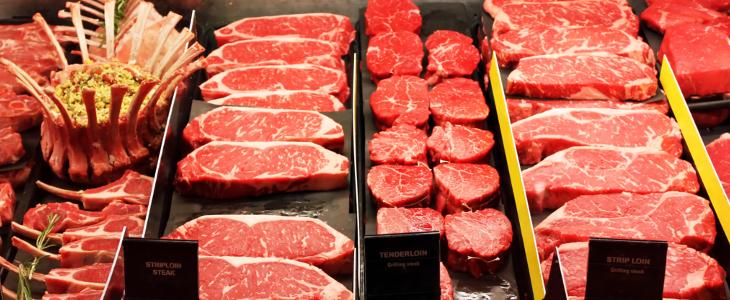How-to tenderise meat in your butcher shop
Customers often associate a tender, mouth-watering roast as a mark of a high-quality slice of meat — particularly when prepared by a butcher. Often the meat (either good or bad) creates a lasting memory that will impact the customer’s next purchasing decision.
As a butcher, it’s important to produce high-quality cuts of meat that cook perfectly to keep your customers coming back. However, depending on the size and priorities of your shop you might want to know a little bit more about how to tenderise meat and we’re here to help!
Dry ageing
One of the most popular ways to tenderise meat is dry ageing. Dry ageing is a traditional technique that’s primarily used for beef, but can work well for venison.
Most supermarkets age meat for about 10 days. However, for the best flavour and tenderness it can several months to properly age a cut of meat. Essentially what happens during this process is the meat slowly starts to break down (decompose). Once the process is completed you’ll need to trim off the excess or decomposed bits — that’s part of why dry aged meat costs more, there’s less of it.
In the flavour awards, a butchers dry aged beef wins out over wet aged or machine tenderised every time! The exquisite flavour is partially why so many award winning gastro pubs, restaurants, and butcher shops (here in the North West) use or supply dry-aged meat.

It’s important to note the process of dry ageing takes weeks and must be strictly regulated to keep the environment cold and dry. If you choose to do dry ageing in your butcher shop you’ll need a separate and specific refrigerator for this process. That way you can keep a watchful eye on the temperature and moisture content of the air.
Wet ageing
Many butcher shops in the country use a process called wet ageing. This process is faster and can be more cost effective than dry ageing meat. The reason is meat is vacuum packed and will age in its own juices.
Due to this process there’s virtually no product shrinkage (unlike with dry ageing) and it can be attractive for butchers looking for volume. You may even find some customers prefer the metallic flavour associated with this specific process.

If you choose to do wet ageing in your butcher shop you’ll only need vacuum seal bags and places to store the cuts!
Machinery
Some butcher shops may not have the biggest freezers, though some may have a decent amount of working space. If yours is the latter, you may want to consider a counter-top meat tenderiser. This way you can still provide a tendering service to your customers when they request it!
Customers may want their meat tenderiser if they are cooking stir-fry or other meals that use leaner meats. A meat tenderiser is usually made from stainless steel parts that are easy to clean and sanitise. Most will tenderise boneless meat without tearing it, to help maintain natural juice and flavour.
If space is at a premium in your butcher shop the best thing to do is weigh the pros and cons of each method. You may find it’s actually more profitable to do dry-ageing if you can supply local restaurants, markets, and regular customers.
At Butcher’s Equipment Warehouse, we stock a range of reliable butchers knife sharpeners to meet your needs! With us, you’ll find everything you need to keep providing top-quality meat while operating at peak efficiency. And if you’ve got any questions or need any advice, feel free to give our friendly team a call on 01254 427761.




